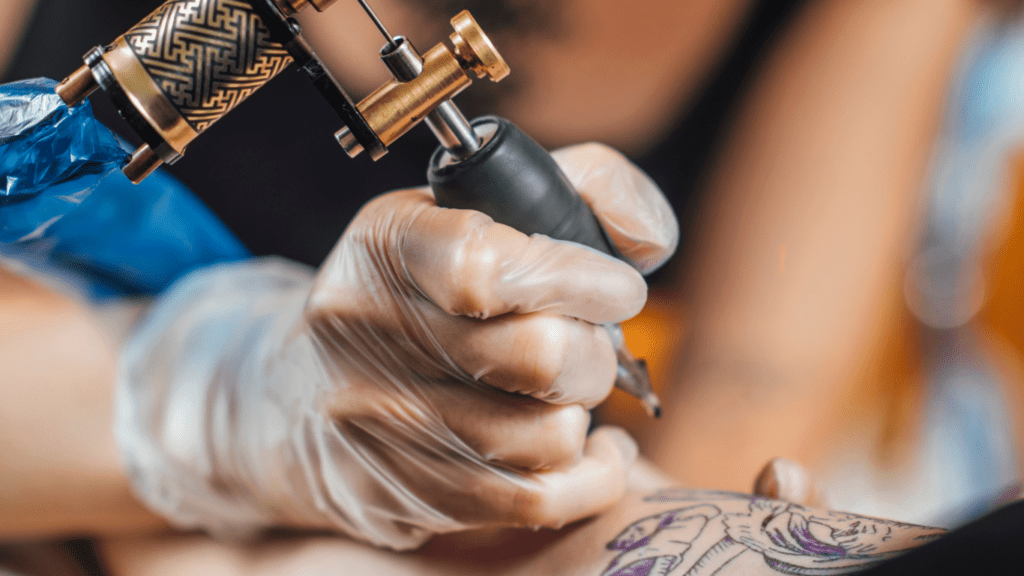Understanding Tattoo Placement: Significance and Visibility
Deciding where to place a tattoo carries significant meaning. The chosen spot affects both how often others see it and what message it conveys.
Factors to Consider Before Choosing a Spot
- Pain Tolerance: I know pain levels vary across different parts of the body. Areas like ribs or ankles tend to be more painful, which might be a consideration based on my pain tolerance.
- Visibility: Placement determines who sees the tattoo. If I want my tattoo to be seen at work or hidden most of the time, that’s a key consideration.
- Skin Changes: As skin ages, it loses elasticity, causing ink to blur or spread. I might think about regions that age more gracefully, like arms or shoulders.
- Tattoo Size: Larger tattoos often need broader areas. If I want an intricate design, I would choose a place with enough space, such as my back or thigh.
- Lifestyle Compatibility: My lifestyle also impacts placement. For instance, if I swim frequently, placing it where it won’t constantly be in chlorine might be wise.
Common Placement Areas and Their Meanings
- Wrist: Wrist tattoos signify openness and are often small and delicate. They are visible and can easily be shown off or hidden with accessories.
- Back: Tattoos on the back are larger and can be elaborate. They often represent strength and can remain under wraps if needed.
- Forearm: Forearms offer visibility and medium space for detailed designs. They symbolize expression and display confidence.
- Ankle: Ankle tattoos are small and subtle, representing femininity and discretion. They can be hidden easily, serving those who prefer minimal visibility.
- Chest: Chest tattoos are close to the heart, symbolizing personal significance. They are usually for designs of deep emotional value and can be easily hidden.
By evaluating these factors and common areas, I can make an informed decision on my tattoo placement that aligns with my preferences and lifestyle.
The Most Popular Tattoo Spots and Their Appeal
Understanding the appeal of popular tattoo spots helps in making an informed decision. Certain areas of the body serve different purposes and convey unique messages.
Shoulders and Arms: Symbolism and Versatility
The shoulders and arms are popular for their versatility and symbolic value. Shoulder tattoos often represent strength and are easily concealed if required.
Upper arms allow for extensive designs and can be connected to shoulder or chest pieces. Forearm tattoos offer a balance of visibility and discretion, making them ideal for designs that you want to show off or hide as needed.
Back and Spine: Large Canvas and Intensity
The back and spine provide a large canvas for intricate designs. Full-back tattoos can accommodate complex artwork, from mythical creatures to sprawling landscapes.
Spine tattoos, while more painful due to the proximity of vertebrae, can offer a dramatic and elegant appeal. Both areas allow for significant creativity and detailed artwork without compromising on visibility control.
Ankles and Feet: Subtlety and Personal Nature
Ankles and feet appeal to those seeking subtle and personal tattoos. These areas are perfect for smaller, delicate designs like floral patterns or meaningful symbols.
Ankle tattoos can be concealed by clothing or footwear, offering flexibility for professional settings. Foot tattoos can be more painful due to thin skin but provide a unique placement for personal and intimate designs.
The Pain Factor in Tattoo Placement
Pain levels vary significantly across different body parts, and understanding this can guide placement choices.
Comparing Pain Levels Across Different Body Parts
Several areas are known for higher pain levels during the tattooing process.
- Ribcage: High pain due to thin skin and proximity to bones.
- Ankles and Shins: High pain because of minimal flesh and nerves’ presence.
- Elbows and Knees: Painful due to skin thickness and joints’ sensitivity.
- Spine and Back: Varying pain; thinner skin and bony regions hurt more.
- Wrists and Hands: High pain from numerous nerves and thin skin.
Less painful areas often have more muscle or fat.
- Forearms and Upper Arms: Lower pain due to thicker skin and muscle.
- Thighs: Moderate pain; the fat layer helps in pain absorption.
- Shoulders and Calves: Lower pain from muscle padding.
Tips for Managing Pain During Tattoo Sessions
Several strategies can help reduce pain during tattoo sessions.
- Hydrate: Drinking water keeps skin hydrated, aiding resilience.
- Sleep Well: Proper rest ensures a higher pain threshold.
- Eat Before: Consuming a meal prevents dizziness and maintains energy.
- Numb Creams: Topical anesthetics can ease discomfort.
- Breathing Techniques: Deep breaths help manage pain spikes.
- Distractions: Listening to music or podcasts can divert attention.
Selecting a tattoo’s placement involves considering pain levels, but managing pain effectively can make the experience more bearable.
Choosing the Right Tattoo for Your Desired Placement

Picking the right tattoo involves considering the design and its placement. Different areas suit various tattoo styles, sizes, and details. Let’s explore key factors to make an informed decision.
Coordinating Tattoo Design with Body Area
Design choice ties closely to the body area. For instance:
- Wrist: Small, simple designs like symbols or minimalistic art fit well. The narrow space works best for concise tattoos.
- Back: Larger designs like intricate landscapes or detailed artwork find ample space here, giving artists freedom to expand.
- Forearm: Medium-sized designs, such as names, quotes, or geometric patterns, complement this area. It offers visibility without overwhelming space constraints.
- Ankle: Delicate, small designs like anklets or subtle florals align well with the curved surface.
- Chest: Large, symmetrical designs like mandalas, large scripts, or animal portraits suit this broad area, allowing for detailed work.
Body curvature, size, and movement significantly influence design appropriateness. Analyzing these factors helps in selecting the suitable design for each body part.
Adjusting Tattoo Size and Detail Based on Location
Tattoo size and detail levels must match the chosen area. Consider the following:
- Hands and Fingers: Opt for small, less detailed tattoos due to limited space and skin elasticity.
- Thighs and Calves: Medium to large designs, such as portraits or extensive patterns, work well here thanks to ample, flat surfaces.
- Spine: Vertically aligned designs like scripts or tribal art complement this long, narrow area.
- Feet: Small, simple designs like symbols or initials fit due to the limited space and skin characteristics.
Location dictates the detail possible in a tattoo. Intricate designs suit larger, less mobile areas while simpler ones fit compact, flexible spots.
Choosing the right tattoo involves a deep understanding of both the design and the desired placement. By considering these factors, I can ensure optimal visibility and satisfaction with the final result.


 Parisilyn Cruz has played a pivotal role as an article writer and key contributor in the development of Innov Art Foundry. Her deep passion for the art world is reflected in the insightful and engaging content she creates, covering everything from the latest art trends to in-depth explorations of virtual reality's impact on artistic expression. Parisilyn's writing not only informs but also inspires readers, making complex topics accessible and intriguing for a broad audience.
Beyond her writing, Parisilyn has been instrumental in shaping the direction of Innov Art Foundry. Her contributions have helped to establish the platform as a trusted resource for both seasoned artists and newcomers to the art scene. By blending her creativity with a keen understanding of the art landscape, Parisilyn Cruz has ensured that Innov Art Foundry remains at the forefront of contemporary art discourse, continually providing valuable insights and fostering a vibrant community of art enthusiasts.
Parisilyn Cruz has played a pivotal role as an article writer and key contributor in the development of Innov Art Foundry. Her deep passion for the art world is reflected in the insightful and engaging content she creates, covering everything from the latest art trends to in-depth explorations of virtual reality's impact on artistic expression. Parisilyn's writing not only informs but also inspires readers, making complex topics accessible and intriguing for a broad audience.
Beyond her writing, Parisilyn has been instrumental in shaping the direction of Innov Art Foundry. Her contributions have helped to establish the platform as a trusted resource for both seasoned artists and newcomers to the art scene. By blending her creativity with a keen understanding of the art landscape, Parisilyn Cruz has ensured that Innov Art Foundry remains at the forefront of contemporary art discourse, continually providing valuable insights and fostering a vibrant community of art enthusiasts.